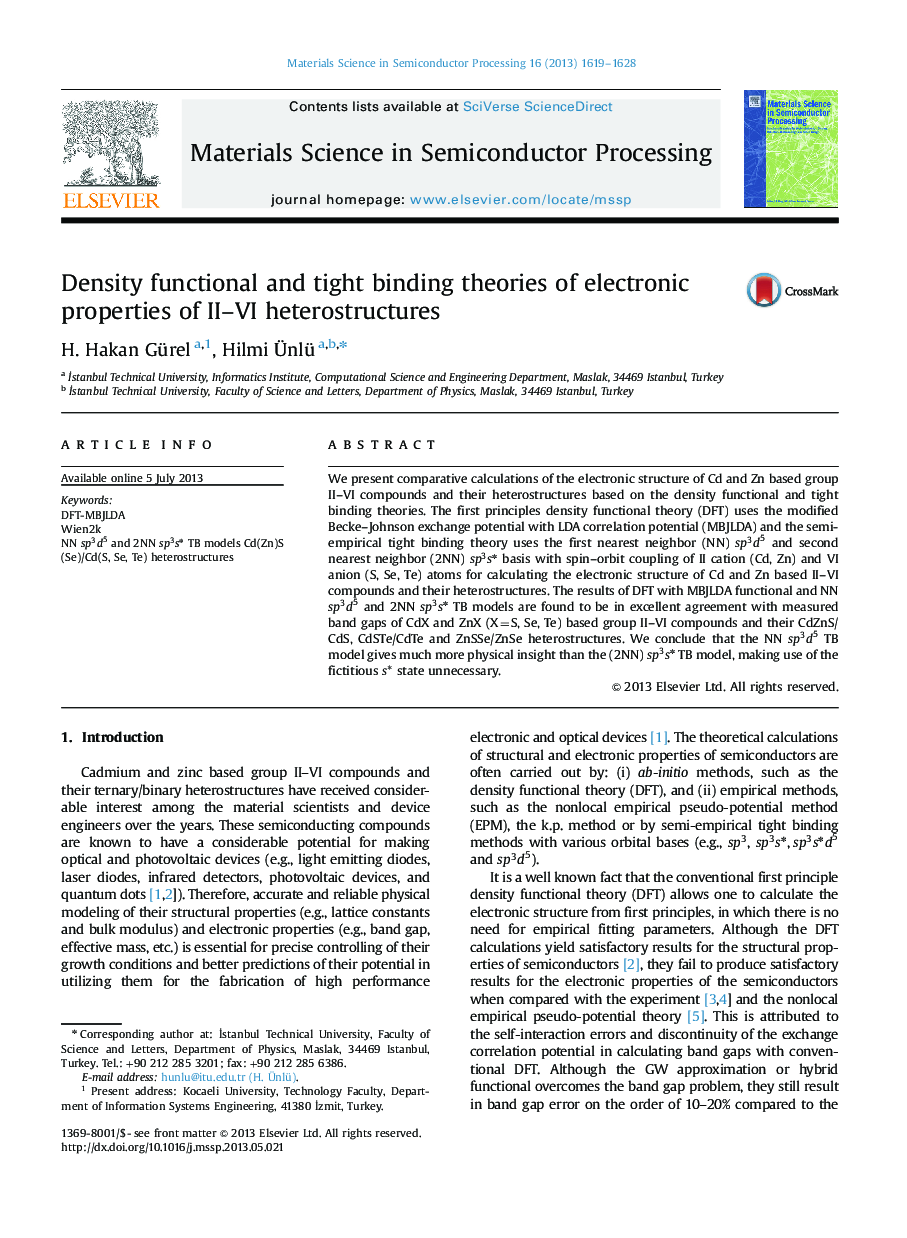| Article ID | Journal | Published Year | Pages | File Type |
|---|---|---|---|---|
| 10407026 | Materials Science in Semiconductor Processing | 2013 | 10 Pages |
Abstract
We present comparative calculations of the electronic structure of Cd and Zn based group II-VI compounds and their heterostructures based on the density functional and tight binding theories. The first principles density functional theory (DFT) uses the modified Becke-Johnson exchange potential with LDA correlation potential (MBJLDA) and the semi-empirical tight binding theory uses the first nearest neighbor (NN) sp3d5 and second nearest neighbor (2NN) sp3sâ basis with spin-orbit coupling of II cation (Cd, Zn) and VI anion (S, Se, Te) atoms for calculating the electronic structure of Cd and Zn based II-VI compounds and their heterostructures. The results of DFT with MBJLDA functional and NN sp3d5 and 2NN sp3sâ TB models are found to be in excellent agreement with measured band gaps of CdX and ZnX (X=S, Se, Te) based group II-VI compounds and their CdZnS/CdS, CdSTe/CdTe and ZnSSe/ZnSe heterostructures. We conclude that the NN sp3d5 TB model gives much more physical insight than the (2NN) sp3sâ TB model, making use of the fictitious s* state unnecessary.
Keywords
Related Topics
Physical Sciences and Engineering
Engineering
Electrical and Electronic Engineering
Authors
H. Hakan Gürel, Hilmi Ãnlü,
